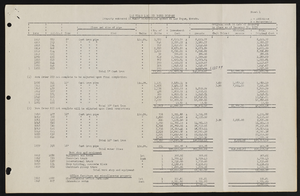Search the Special Collections and Archives Portal
Search Results
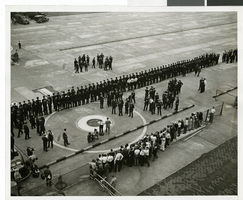
Photograph of the arrival of Howard Hughes at Floyd Bennett Airport, New York, July 14, 2013
Date
Archival Collection
Description
Image
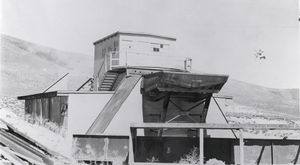
Dredge in Manhattan, Nevada: photographic print
Date
Archival Collection
Description
From the Nye County, Nevada Photograph Collection (PH-00221) -- Series VII. Other areas in Nye County -- Subseries VII.I. Wilson Family (Toiyabe Mountains, Nevada). The hopper on the starboard side of the dredge is visible. The dredge processed the gravel through jigs as opposed to sluices. With the volume of material the dredge handled, a sluice would have been impractical. A jig has a diaphragm driven by an electric motor which pulsates. The Yuba jigs were about 42 inches long by 42 inches across. A bed in the jig was filled with steel shot. As the gravel material floated across the steel shot, the jig's pulsating diaphragm raised the steel shot-bed up and gold, being so much heavier than the gravel and the steel shot, would work its way down through the shot-bed. The jig bed usually has a 1/8-inch mesh stainless steel screen so that any gold finer than 1/8 inch will pass through the screen. The jig pulsated between 60 and 100 times a minute, a "steady throb." Gold coarser than 1/8 inch, being very heavy, would be held on top the screen beneath the bed of steel shot.
Image
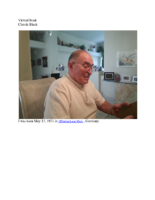
Biographical essay by Claude Black, 2014
Date
Archival Collection
Description
Claude Black describes his family's escape from Germany to Santiago, Chile, and eventually settling in Chicago, Illinois. The essay is illustrated with images of his family and documents from their journey.
Text
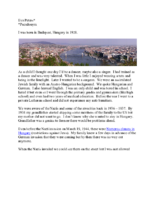
Biographical essay by Eva Peters, 2014
Date
Archival Collection
Description
Peters' essay describes her family's journey to escape the Nazis and Communism, remaining in Hungary until 1956. She and her husband were part of the Hungarian Freedom Fighters group, and escaped to Vienna, and then to the U.S.
Text
Light, Edward C., 1917-1992
Edward C. Light was an aeronautical engineer at the Hughes Aircraft Company (HAC) where he was responsible for supervising the design of aircraft control systems between 1942 and 1946. During this period, he worked on the Hughes H-4 Hercules, also known as the "flying boat" or the "Spruce Goose." As of March 2017, the plane has the longest wingspan of any flight-capable aircraft. Later in his career, he returned to HAC in 1954-1955 as a research physicist working on the Falcon Guidance System.
Person
Kuechel, Alexander, 1924-
Alexander Kuelchel, a survivor of the Holocaust, was born in Berlin, Germany to parents who originally came from Poland. He attended a Christian school until Adolf Hitler came into power, then he was moved to a private school that had a synagogue in the back.
Person
Paz, Jacob, Dr.
Dr. Jacob Paz was born November 14, 1938 and grew up in an agricultural environment in Israel where he attended Kadoorie High School. After his graduation, Paz joined the Israeli army. He attended technical school for two years and started working for the Israel Atomic Energy commission in Dimona, Israel, making atomic bombs. Paz was accepted into University of California Davis, and moved to the United States to study veterinary medicine.
Person
Simmons, Eva G.
Eva G. Simmons was born in Somerville, Texas December 31, 1938. She grew up in Austin, Texas. Simmons moved to Las Vegas, Nevada in 1963. She worked for the Clark County School District, and has an elementary school in North Las Vegas, Nevada named for her. Eva Goins Simmons never imagined moving to Las Vegas, Nevada, but she moved here twice: Once briefly in 1957 to be with her sister and then again continuously in 1963 after graduating from University of Texas, Austin and marrying her husband George Simmons.
Person
Clark, Wilbur, 1908-1965
Wilbur Clark (1908-1966) developed and designed the Desert Inn Hotel and Casino in Las Vegas. As the head of the resort, he promoted the Desert Inn and Las Vegas throughout the nation.
Born to Shirley and Lulu Clark in Keyesport, Illinois on December 27, 1908, Wilbur Clark moved to San Diego, California at sixteen. He worked a series of jobs before moving to Reno, Nevada in 1951 and starting a career in gaming. After several years in Reno, he moved to Las Vegas in 1938 and, with several partners, opened a casino on Boulder Highway.
Person

